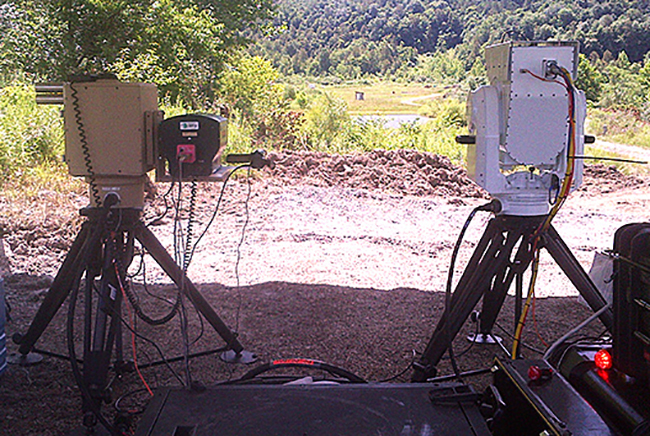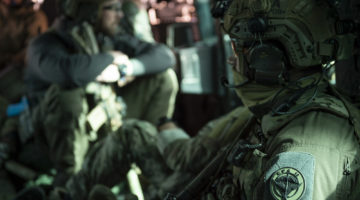(Air Force Magazine – By Rachel cohen) – Air Force Takes Lasers, Microwave Weapons for a Spin at Army’s MFIX
A recent set of experiments with laser and microwave weapons in Oklahoma is shaping how the Air Force moves forward with its plan to protect bases from drones using directed energy.
Five systems participated in the Air Force portion of the Maneuver and Fires Integrated Experiment [MFIX], an Army-run demonstration at Fort Sill, Okla., that ran from Oct. 15 to Nov. 6.
Those included Applied Technology Associates’ Locust system, Boeing’s Compact Laser Weapons System, Lockheed Martin’s Advanced Test High Energy Asset laser, the Air Force Research Laboratory’s Tactical High-Power Operational Responder microwave weapon, and the Army’s Mobile Expeditionary High-Energy Laser, according to Michael Jirjis, who oversees directed energy efforts at AFRL’s strategic development planning and experimentation office.
Though the Air Force has vetted DE systems before, it participated in MFIX to explore command and control ideas for weapons that track and take down small drones. Each system connected to Army C2 and was run by security forces airmen.
The experiment downed about 80 unmanned aerial systems, Jirjis said, pitting single and multiple DE weapons against up to 20 UASes at a time.
Could the Air Force ramp up the test to include 100 drones, or 1,000? USAF isn’t ready to take on swarms of that size, Jirjis said, but the service could still see how its weapons fare against something like Intel’s drone swarm that put on a show over the 2018 Winter Olympics in South Korea.
(…)
MFIX marked the first time the Air Force tried to challenge multiple sensors to prioritize tasks and choose the right option to handle an encroaching drone. Experiments last fall looked at standalone solutions that included their own battle management and electro-optical and infrared sensing capabilities and could be dropped anywhere. But that’s only one piece of the counter-UAS challenge.
“The other portion is connecting in with existing command and control systems,” Jirjis said. “Can we take our DE systems, integrate them with our existing command and control, and try to provide that cueing aspect that is necessary through the command and control to operate these systems against threats?”
He added that the team passed on what it learned about C2—such as needing speedier data-sharing and interfaces that work for new technologies like DE—and how it should evolve to others in the Air Force studying the same issue. While Jirjis declined to elaborate further, the demonstration could help shape broader efforts like the Advanced Battle Management System and related initiatives.
Seeing how the systems fall short also teaches the Air Force what it needs to pursue in more advanced weapons. If the technology can’t sense an incoming drone before it’s close enough to spy or do damage, or if it moves too slowly to take down the aircraft, the service would want to improve on those problems. A few products are starting to add in machine learning to address tracking and attack issues as well. (…)
READ FULL STORY >>> www.airforcemag.com












